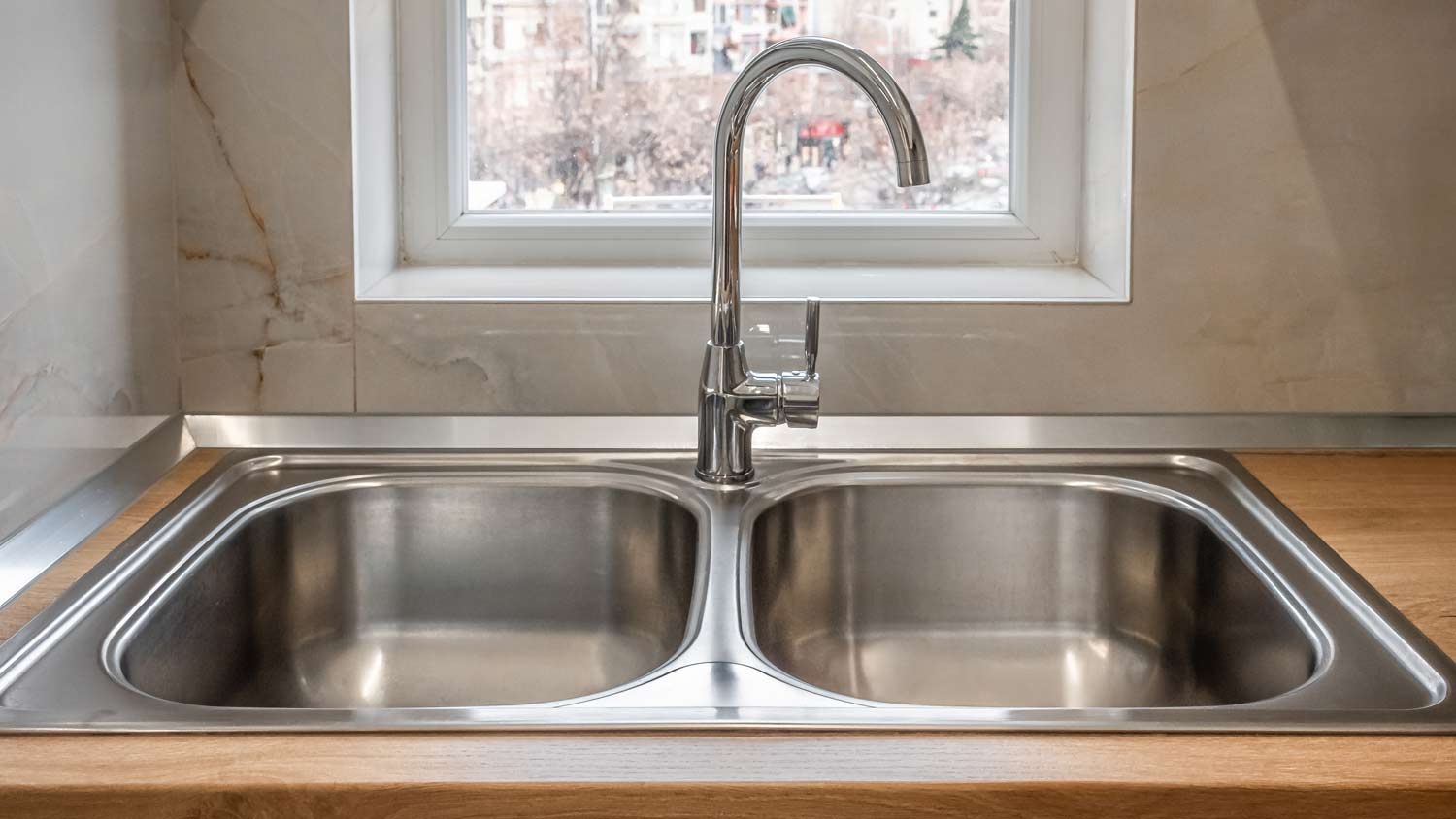How to Remove Mildew From a Front-Load Washer for a Fresher-Smelling Appliance
Freshen up your front-load washing machine in a few easy steps


You may love your front-load washer's modern, sleek look and water-saving capabilities, but this appliance has a dirty little secret: it can get really smelly without proper care. Front-load washers have many crevices notorious for trapping water and soap, leading to stinky odors that permeate your clothes. Here’s how to clean a front-load washer to prevent mildew and other smells from ruining your laundry.
Why Does My Front-Load Washer Smell?
There’s a reason detergent brands don’t see a “machine must” scent—it’s a massively unpleasant smell. If you’ve got lingering odors in your machine, they’ll transfer to your clothes and really set in once you toss them in the dryer. Here are some common causes of a smelly front-load washer.
You’re Not Letting the Washer Air Out
It might be a habit to close it, but try to keep the washer door open on laundry day. When you close the door before the drum has a chance to dry, the moisture becomes trapped, which encourages stinky mold and mildew growth.
Also check the rubber gasket around the door to prevent water from leaking while in use. This is another part where water can linger.
Stagnant water can start to smell over time, so it’s important to dry the interior after each load. You can also prevent odors by wiping down the drum with a mixture of water and vinegar before drying it.
It Needs Cleaning
In some ways, you need to give your washer some grace—you’re asking it to tackle dirty baseball pants, sweaty gym clothes, and soiled garden aprons, after all. Dirt and grime need a place to go before it smells and multiplies. If you haven’t given it a good scrub lately, add cleaning the front-load washer to your monthly cleaning checklist.
A warm, moist environment encourages bacteria or fungi to grow, leading to unpleasant smells in the washer.
Front-Load Washers are Simply Susceptible to Smell
Front-load washers use less water than top-load washers. While this is great for your water bill, it also leaves less water to wash away the grime sitting in the nooks and crannies that usually precedes mold and mildew.
This type of washer also requires special high-efficiency (HE) detergent. If you accidentally dump regular laundry detergent in with your load, it will produce more soap suds that can build up in the washer and generate mold.
Signs of Mold or Mildew in a Front-Load Washer
Between the drain, filter, and rubber gasket, there are a lot of places for mold and mildew to accumulate sneakily. You’ll need your nose to detect a buildup as it’s easier to smell than see.
If your nostrils detect a stale, musty, rotten, or earthy scent when you open the washer, you may want to clean it before tossing in your favorite sweater.
How to Clean a Front-Load Washer
Your washing machine faithfully cleans your clothes—but who’s cleaning it? Here are simple steps to clean your front-loader to eliminate any odors and keep the washing machine mold- and mildew-free and your clothes fresh.
"This process is time-consuming but well worth it," says Asya Biddle, Angi Expert Review Board member and manager of The Dustbusters janitorial company in Williamsport, PA. "Cleaning your front-load washer will extend the lifetime of your washer and your clothes as well."
1. Wipe the Gasket
Start by wiping the gasket with a wet cloth. You might find a lot of debris and gunk residue—one of the most common sources of mold in front-loading machines.
Be sure to clean all nooks and crannies around the gasket and the hard-to-reach areas using Q-tips or a toothbrush. If the gasket is still dirty, scrub with a kitchen sponge using a 1:1 mixture of white vinegar and water.
2. Scrub the Dispensers
Remove the soap, bleach, and softener dispensers. They can be a sneaky source of mold as they hold onto product residue and stagnant water.
Give the dispensers a good scrub with hot water and soap. A toothbrush will also help you get inside the cracks and clear out any buildups.
3. Run a Cleaning Cycle
If your washing machine doesn't have a cleaning cycle, run it on the longest and hottest cycle.
Mix one-quarter cup of baking soda with an equal amount of water, then add the solution to your machine's detergent dispenser. Pour two cups of vinegar into the drum, and start the cycle.
The baking soda and vinegar should clear out residue in every part of the machine, eliminating any mold and eventually helping remove any odors.
Run your cycle completely. If the smell remains, try another cycle using a different cleaner (use one at a time), like one-half cup of enzymatic dishwasher detergent or a commercial washer cleaner.
4. Sanitize the Front-Load Washer
Chlorine bleach will sanitize the front loader and kill any bacteria causing mold or mildew. Pour 2 cups of chlorine bleach into the drum, making sure not to mix it with any other cleaners.
Set the washer to the hottest temperature setting and start the cycle. Stop the washing cycle once the drum is full of water and let it sit for 30 minutes, then resume the cycle.
How to Prevent Smells and Mildew in a Front-Load Washer
Banishing odor-causing bacteria from your front-load washer requires regular cleaning and maintenance. Here are a few tips for cleaning your front load washer.
Wipe it dry with a towel or cloth after each load.
Deep clean the appliance once per month using hot water and soap, including the gasket and all dispensers.
Run the self-cleaning cycle using hot water.
Air out the drum to prevent moisture, a breeding ground for bacteria.
Inspect the gasket for debris regularly, and sanitize with a water and vinegar solution as needed.
Use the right amount of high-efficiency detergent as recommended for your load size.
Don’t let your laundry sit in the drum wet; transfer your laundry to the dryer immediately after washing.
DIY vs. Hire a Pro
Regular maintenance, like cleaning the washer once a month and keeping the door open after washing a load of laundry, can keep foul odors, mold, and mildew out of your front-load washer. Fortunately, a DIY cleaning uses household products like soap, vinegar, baking soda, or bleach. Even if you need to restock your entire cleaning caddy with these items, it should cost you less than $25.
If your DIY efforts aren’t successful, consider hiring a washing machine repair specialist near you. Washing machine repairs cost around $50 to $450 total, or about $50 to $150 per hour. You may need to budget for the cost to replace the gasket, which is about $50 to $125, or the problem could be the drain hose, which is around $130 to $250 to replace.
If your washer is over 10 years old, the pro may recommend buying a new appliance altogether. A new front-load washing machine costs about $700 to $1,000, depending on any bells and whistles you decide to spring for.
Additional Questions
How do you clean the rubber seal on a washing machine?
Inspect the rubber seal regularly for any debris. For a deeper clean, you can use a vinegar and water solution to wipe down the seal, or sprinkle baking soda around the seal and run the machine empty. You can also sanitize the seal by using bleach and water.
Does vinegar damage a front-load washer?
Using vinegar occasionally can help eliminate musty odors, but don’t make washing clothes with vinegar a daily habit. Frequent use of vinegar in a front-load washer can damage this appliance by melting the rubber seals, which can cause leaks and water damage in your laundry room.
Does baking soda ruin a washing machine?
Baking soda is safe to use to clean a washing machine or deodorize a laundry load. Add about 1/2 cup of baking soda to a laundry load to neutralize odors and freshen up the washing machine.















